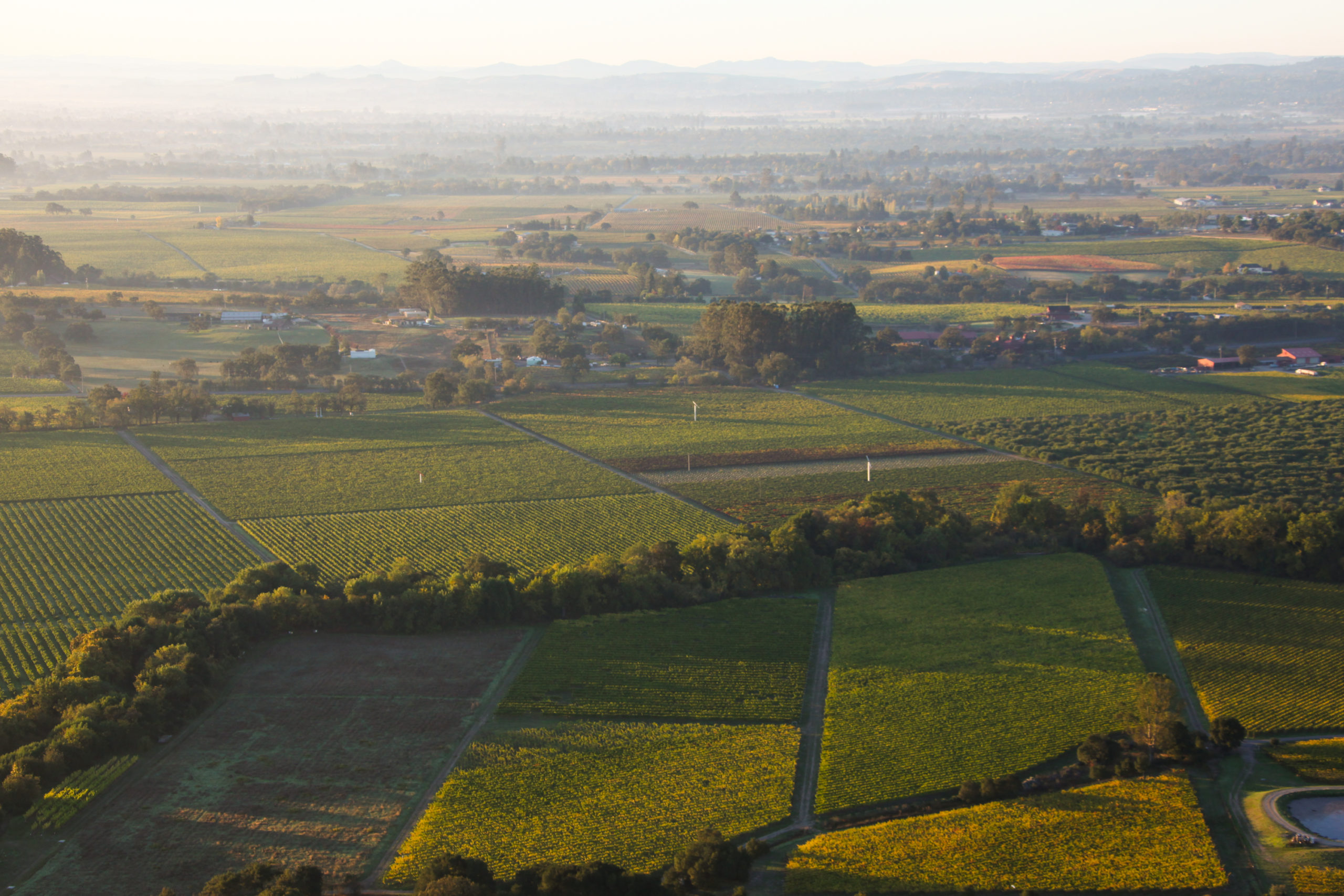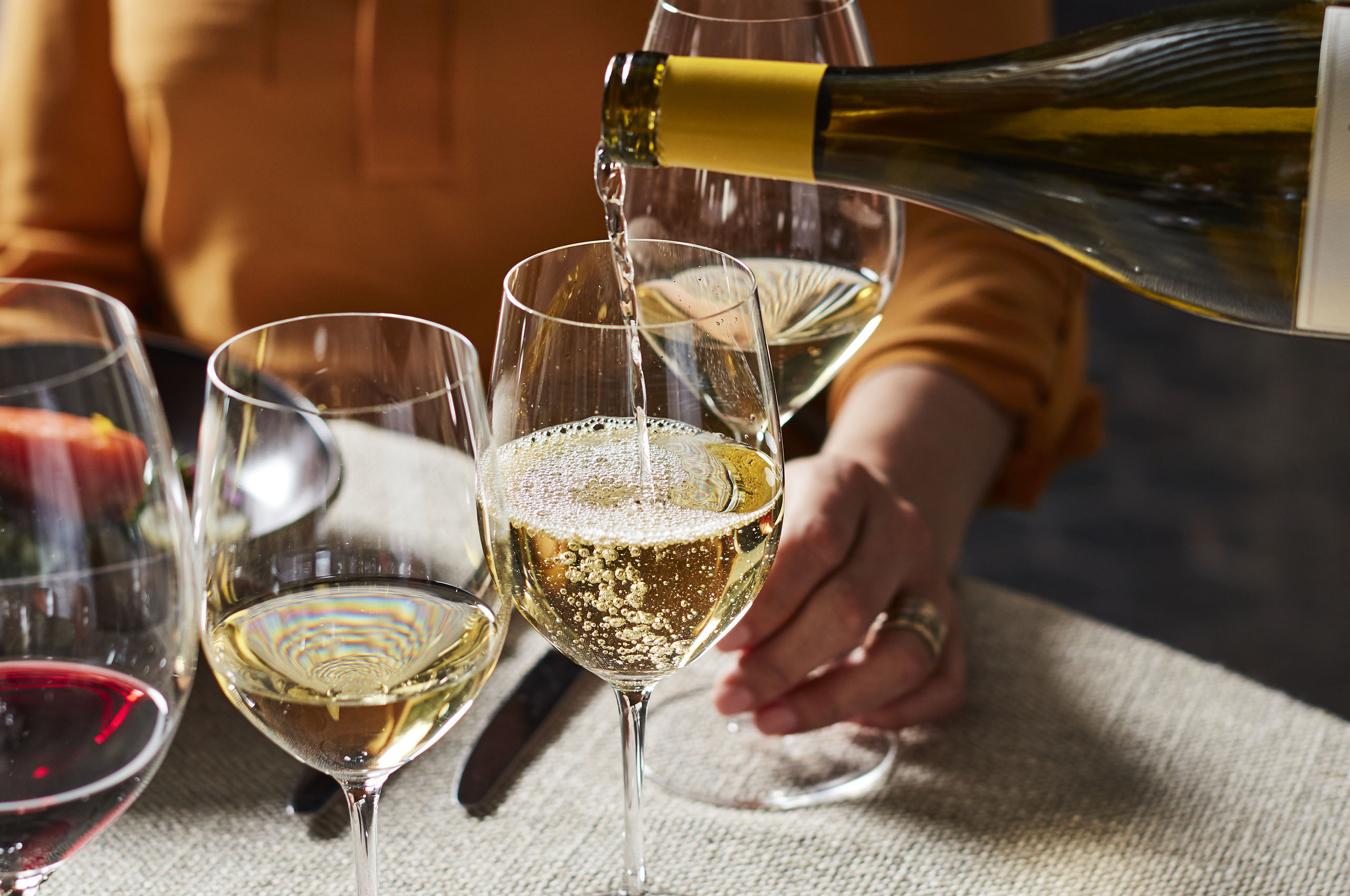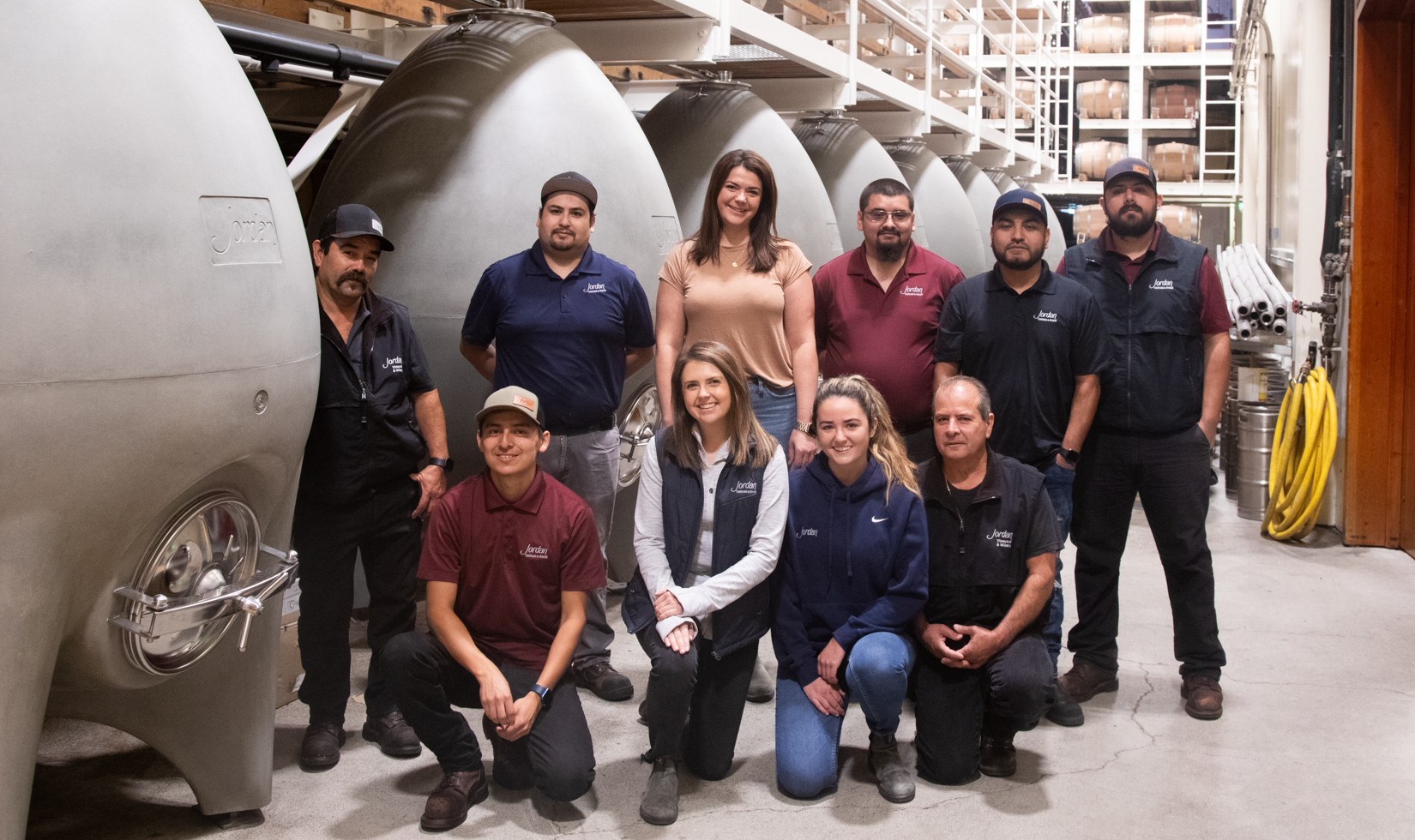Winemakers love to experiment, and I am certainly no exception. When my peers ask how I keep boredom at bay when making only two wines—a Russian River Valley chardonnay and an Alexander Valley cabernet sauvignon—I love to explain that, at Jordan, we are constantly tweaking and fine-tuning these singular wines to make them better with each vintage.
Since I started working at Jordan Winery in 2006, I have had a front-row seat to the many changes we have made to improve our cabernet, from refining fruit sourcing to upgrading our barrels to all French oak. For a good 15 years, we focused on improving the cabernet—with incredibly gratifying results. Though our chardonnay had not been overlooked during that time—far from it—I longed for a new challenge.
That day came soon after I took over as head winemaker, when John Jordan buzzed into my office and said, “I have an idea for the chardonnay program, and I think you’re going to like it.” What he had in mind was a chardonnay “super blend” that would elevate the wine to new heights while maintaining the Jordan house style. I was all in.

With help from Jordan’s grower relations manager Dana Grande, I’d already started playing around with sourcing chardonnay from cooler areas of the Russian River Valley to bring more bright acidity, minerality, citrus and stone fruit flavors to the wine. The grapes we’d been sampling from areas like Sebastopol Hills and Vine Hill Road made me positively giddy about the impact they would have on the blend.
Next, we looked to the cellar. What could we do to improve our chardonnay without masking or overpowering the delicacy, minerality and textural components of our newly sourced fruit? We’d already switched to aging just part of the wine in new French oak barrels to dial back the oak influence, and I realized that we could take that concept a step further by adding an alternative fermentation and aging vessel to the mix. That vessel was the concrete egg.
Better by Design
Egg-shaped vessels have been used to ferment, store and transport wine for thousands of years, and European winemakers have used large concrete vats for centuries. French winemaker Michel Chapoutier combined these concepts in 2001, when he commissioned a local concrete tank producer to create an oval-shaped fermenter. Word of this innovation spread throughout the global winemaking community, and in 2003, the first concrete eggs arrived in the Napa Valley.
The design of the egg is a key reason for its growing popularity. With the help of carbon dioxide and heat released during the fermentation process, the vessel’s oval shape naturally circulates the lees or yeast solids within the tank, keeping it in continuous contact with the wine. This helps add richness and roundness.
The material is another major benefit. Because concrete is porous, it allows a small amount of oxygen to interact with the wine—similar to an oak barrel—which helps the wine evolve and age. However, unlike barrels, concrete vessels do not add woody character that could obscure delicate fruit flavors and aromas. While stainless steel tanks also enable the fruit to shine through, they don’t do anything to help the wine develop, as the concrete egg does.
Egg Encounters
I first encountered these ovoid vessels in my early days at Jordan, when I belonged to a technical group for Sonoma County winemakers. During one of these meetings, we tasted the same wine aged in new French oak, new American oak, stainless steel and concrete vessels. When I sampled the wine in concrete I was immediately struck by the similarities to some of the great Burgundies that inspire Jordan’s winemaking style.
When it came time to create the Jordan Chardonnay super blend, memories of this fateful tasting came flooding back. In 2021, John approved the purchase of a single 476-gallon concrete egg fermenter from local purveyor Sonoma Cast Stone, and we used it that year to make our first chardonnay super blend. The combination of cooler-climate fruit and the new concrete egg vessels resulted in vibrant acidity and incredible fruit purity in the wine, and the best balance we’d seen to date in our chardonnay. We all loved the wine so much that Jordan purchased seven more eggs for the 2022 vintage.
This will be our third year working with concrete egg vessels for both fermentation and aging. Depending on the vintage and yield, we typically devote 3% to 5% of our chardonnay to the eggs, with the remainder going into French oak barrels.
Just as I’d anticipated when we embarked on this journey, the concrete eggs help contribute beautiful minerality and wet stone character to the chardonnay—essential to the Jordan style—without imparting oak aromas and flavors. We do not have limestone in our soils here as they do in Burgundy, yet the concrete brings similar attributes to our wine by enhancing the chardonnay’s mineral notes and helping the wine maintain an incredible freshness it ages.

Because the shape of the egg encourages continual mixing within the vessel throughout fermentation, the chardonnay is always in contact with the lees. Texturally, that translates to a wonderful weight and rich mouthfeel in the wine, but without fatness or flabbiness. Another plus is that the concrete character integrates into the wine beautifully, and very quickly compared to a new French oak barrel. The texture is there early on—usually within a month or two—which surprised me when I first began using the concrete eggs.
When we conduct in-house tastings with our team to compare Jordan’s chardonnay base wines made in both concrete and stainless steel, the difference is remarkable. When the grapes are fermented in the concrete egg, the vessel adds dimension, brightness, freshness and texture—exactly what we want in our chardonnay.
We couldn’t be more excited about the new direction Jordan Chardonnay has taken, inspired by the super blend concept, and we plan to continue using concrete eggs to ferment and age a portion of our chardonnay for the foreseeable future. With benefits like these, it’s pretty much a no-brainer.
While the winery does not plan to extend the concrete program to our cabernet sauvignon at this point, I’m not quite ready to rule it out. One of our growers, Justin Miller at Garden Creek Vineyards in Alexander Valley, just purchased a square-shaped NuBarrel concrete tank from Sonoma Cast Stone for his reds, and he loves it. Somehow, the experimental winemaker in me would just love to get one and try it out.

The post Concrete Egg Vessels Help Elevate Jordan Chardonnay to New Heights appeared first on Jordan Winery.








